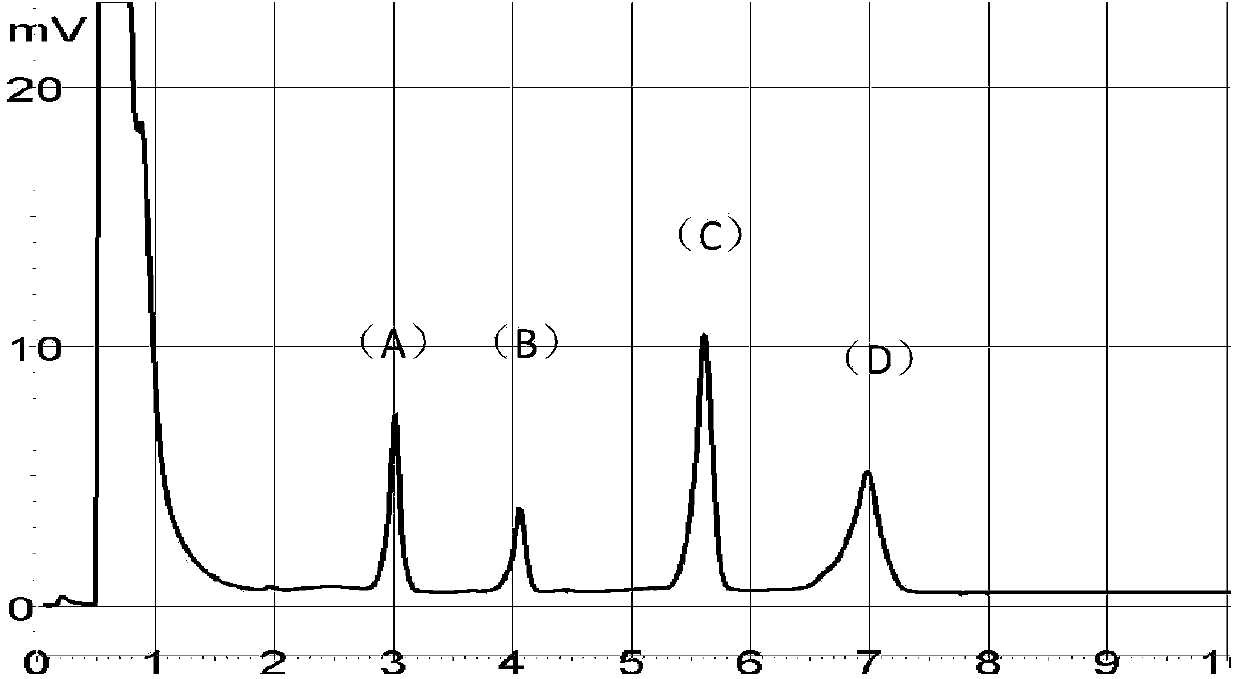Composition for detecting methicillin-resistant and/or erythromycin-resistant staphylococcus aureus
A methicillin- and staphylococcus-resistant technology is applied in the field of mPCR detection of methicillin- and/or erythromycin-resistant Staphylococcus aureus resistance genes, and can solve the problems of complicated operation, false resistance or false sensitivity, Problems such as missed detection, to achieve the effect of simple operation, short detection time, saving labor and financial resources
- Summary
- Abstract
- Description
- Claims
- Application Information
AI Technical Summary
Problems solved by technology
Method used
Image
Examples
Embodiment 1
[0069] ⑴ Primer design, synthesis and kit assembly:
[0070] Primers were designed for the species-specific heat-resistant nuclease nuc gene of Staphylococcus aureus, the mecA gene of MRSA drug resistance determinant, and the two common drug resistance genes ermA and ermC genes that are resistant to erythromycin. The sequence of the primers and the length of the amplified fragments determined in this embodiment are shown in Table 2:
[0071] Table 2
[0072]
[0073]
[0074] On this basis, a test kit is designed. The kit includes Taq DNA polymerase at a concentration of 5U / μL and PCR reaction solution; among them, the PCR reaction solution contains 10mM Tris·HCl, 50mM KCl, 25mM MgCl 2 , DNTPs (dATP, dGTP, dCTP and dTTP) 2.5mM each and the above 4 pairs of Staphylococcus aureus primer pairs (concentrations shown in Table 2).
[0075] ⑵mPCR:
[0076] Using the multiple primers designed in the above step (1) and the corresponding kits to carry out PCR amplification includes the followin...
Embodiment 2
[0105] Example 2. Specificity test
[0106] Extract DNA from erythromycin-resistant MRSA strains carrying ermA, ermC genes, Escherichia coli, Salmonella, Listeria monocytogenes, Vibrio parahaemolyticus, Enterococcus faecalis, Pseudomonas aeruginosa (see Table 1) according to the examples 1 The established method was used for quadruple PCR amplification, and the results of electrophoresis analysis showed that only the erythromycin-resistant MRSA strains carrying ermA and ermC genes detected specific amplified bands, and none of the other strains had amplified bands ( image 3 ). DHPLC analysis results such as Figure 4 , It can be seen that only erythromycin-resistant MRSA strains carrying ermA, ermC genes have detected positive absorption peaks, and the four absorption peaks are consistent with the size of the amplified fragments, indicating that the established DHPLC detection method is effective for pathogenic Staphylococcus aureus, MRSA And erythromycin-resistant Staphylococcu...
Embodiment 3
[0107] Embodiment 3. Detection sensitivity test
[0108] The erythromycin-resistant MRSA strain carrying the ermA, ermC gene was inoculated into TSB medium, cultured at 36±1°C for 24 hours, and the number of bacteria in the enrichment solution was measured by the gradient dilution method or counting method to be 2.3×10 8 cfu / ml, and perform 10 -1 , 10 -2 , 10 -3 , 10 -4 , 10 -5 , 10 -6 Dilution of, the number of bacteria is 2.3×10 7 cfu / ml, 2.3×10 6 cfu / ml, 2.3×10 5 cfu / ml, 2.3×10 4 cfu / ml, 2.3×10 3 cfu / ml, 2.3×10 2 cfu / ml bacterial solution, for 10 -2 , 10 -3 , 10 -4 , 10 -5 , 10 -6 DNA extraction and quadruple PCR-electrophoresis and DHPLC analysis were performed on the bacterial liquid.
[0109] mPCR-electrophoresis results such as Figure 5 As shown, the lowest detection limit of electrophoresis detection method is 10 -5 (I.e. 2.3×10 3 cfu / ml).
[0110] The results of mPCR-DHPLC are as follows Image 6 As shown, the lowest detection limit of DHPLC method is 10 -5 (I.e. 2.3×10 3 cf...
PUM
 Login to View More
Login to View More Abstract
Description
Claims
Application Information
 Login to View More
Login to View More - R&D
- Intellectual Property
- Life Sciences
- Materials
- Tech Scout
- Unparalleled Data Quality
- Higher Quality Content
- 60% Fewer Hallucinations
Browse by: Latest US Patents, China's latest patents, Technical Efficacy Thesaurus, Application Domain, Technology Topic, Popular Technical Reports.
© 2025 PatSnap. All rights reserved.Legal|Privacy policy|Modern Slavery Act Transparency Statement|Sitemap|About US| Contact US: help@patsnap.com



